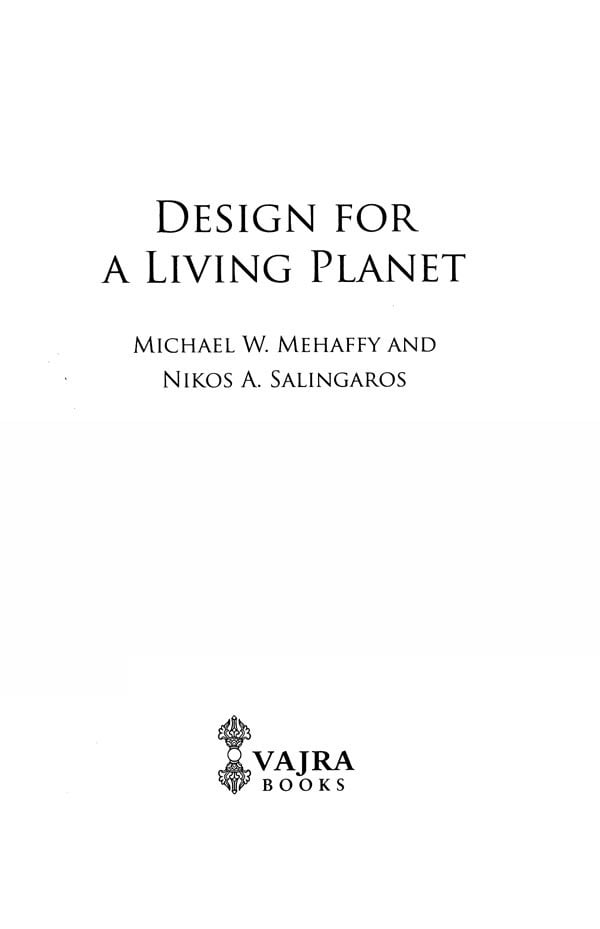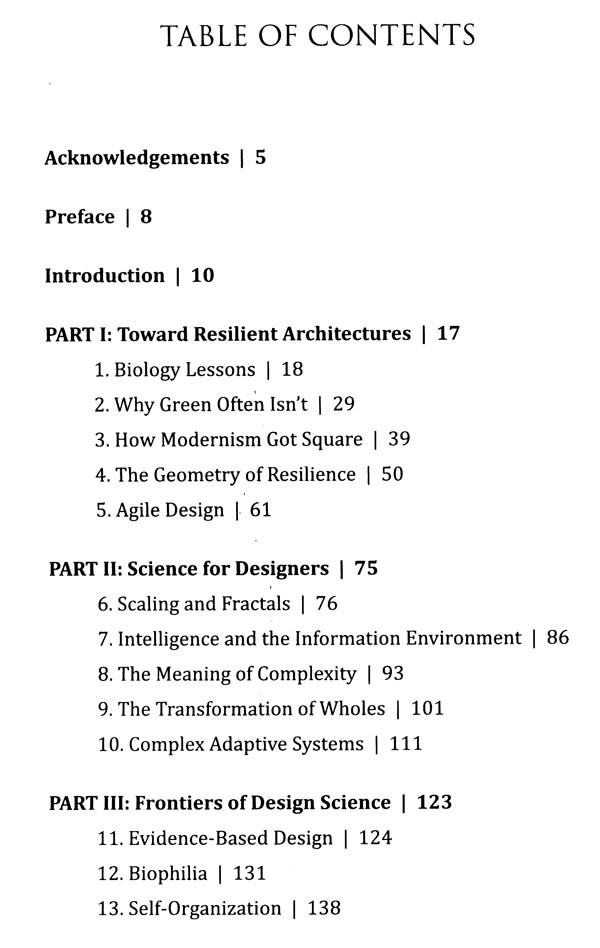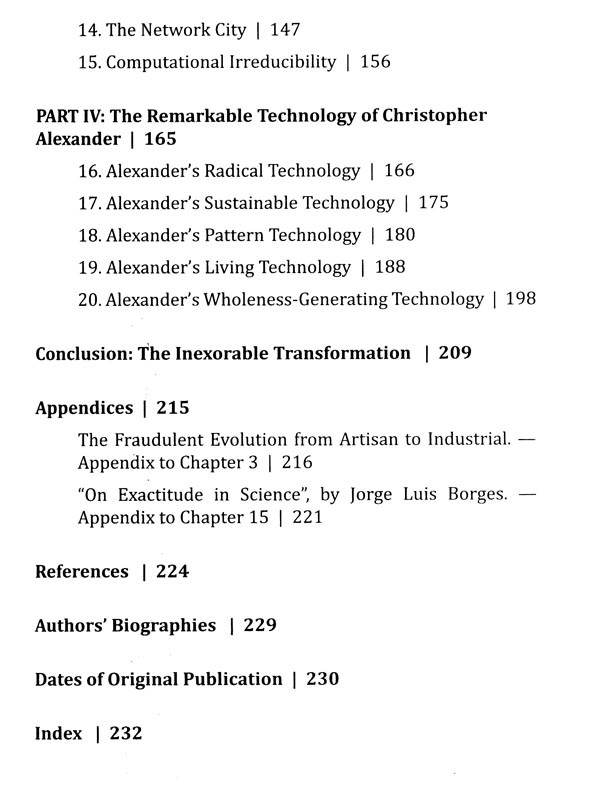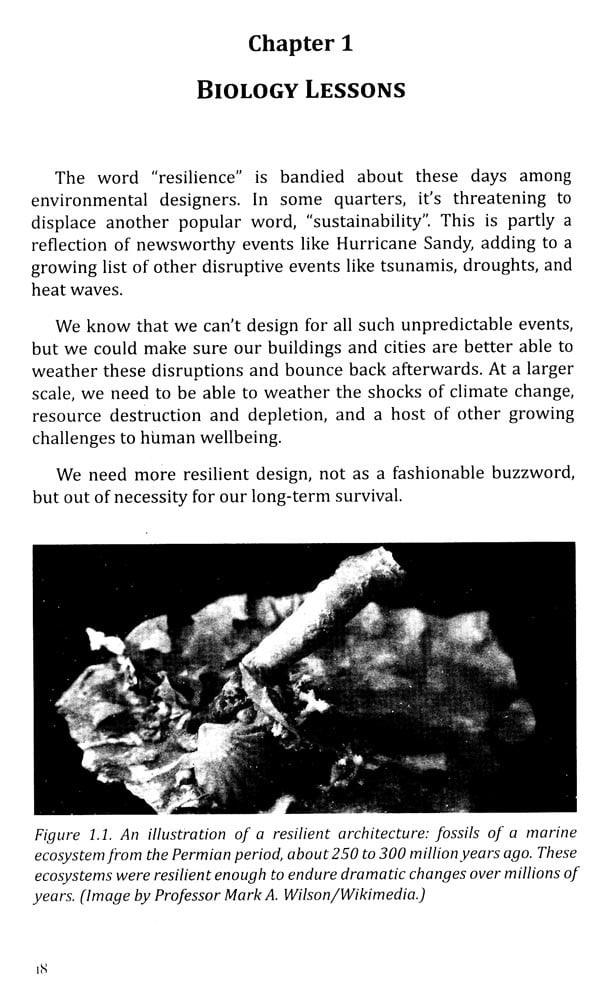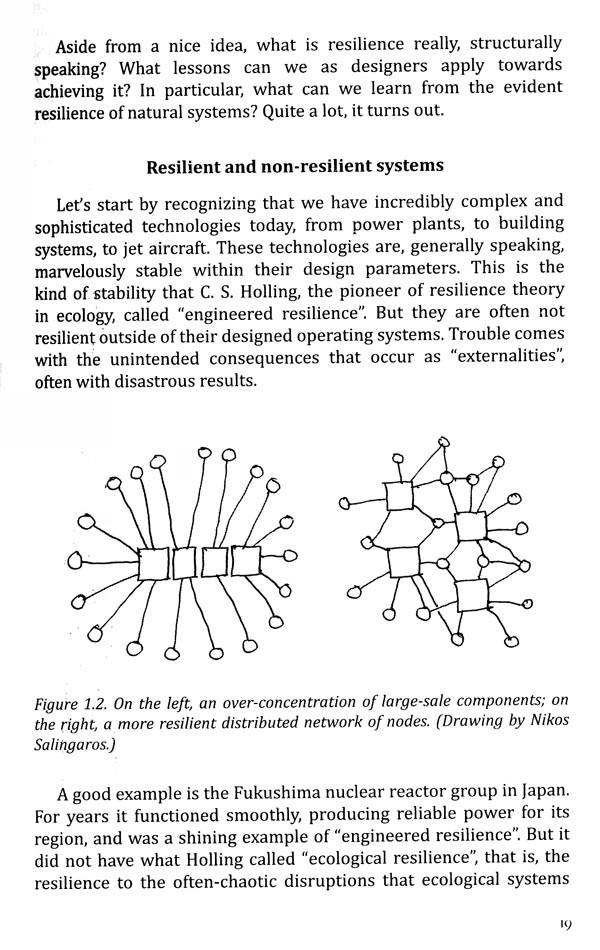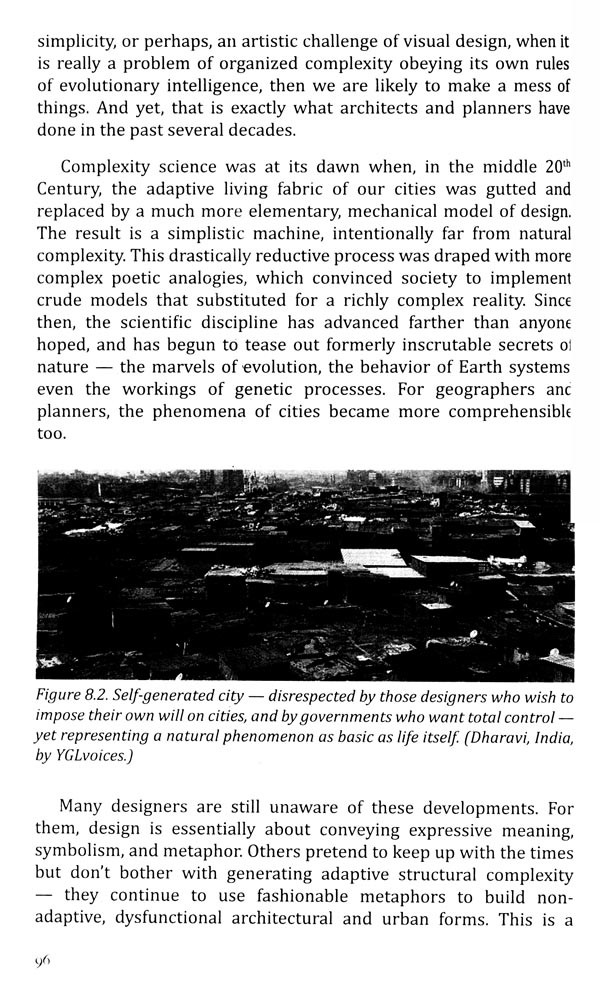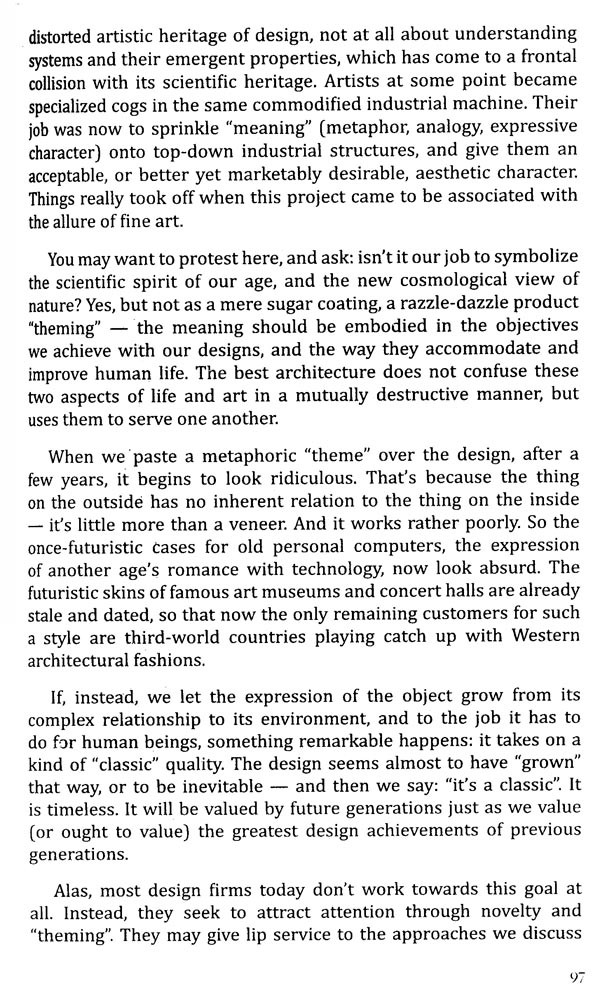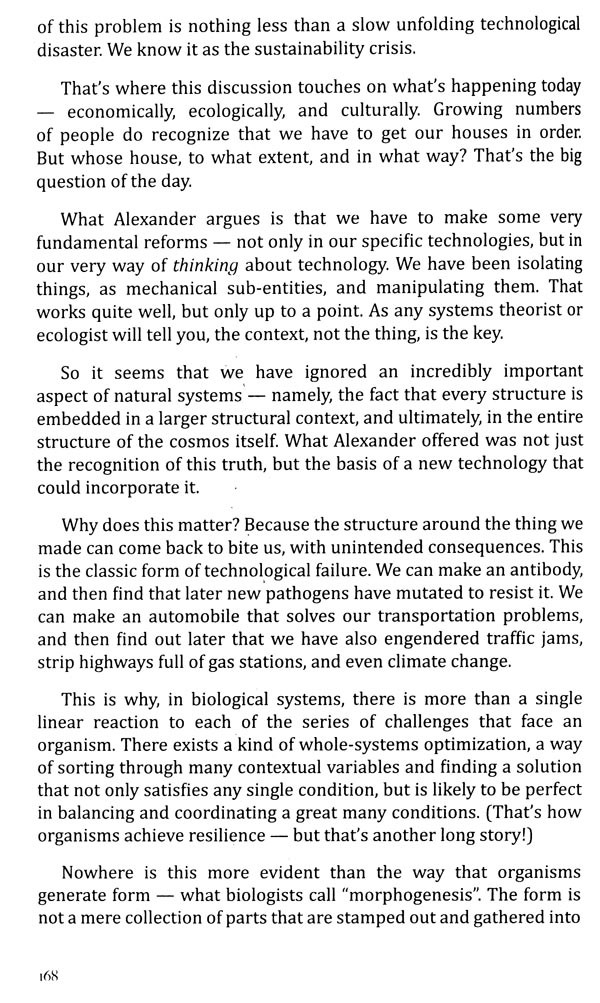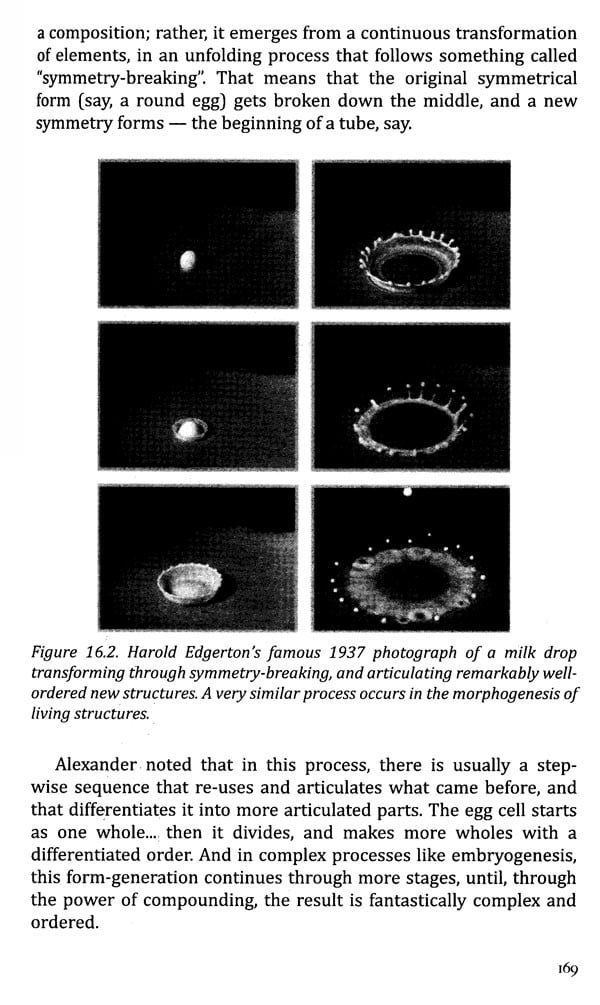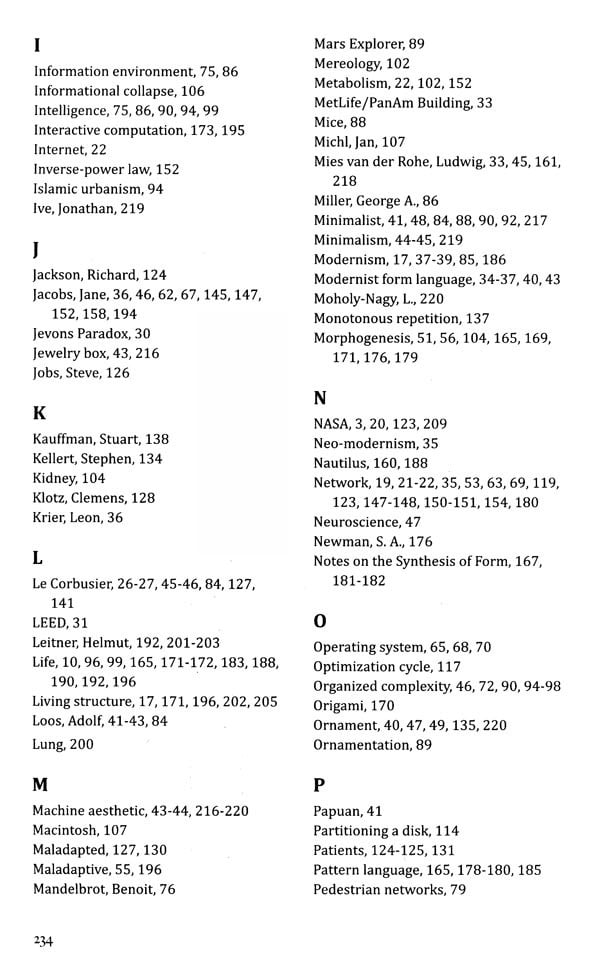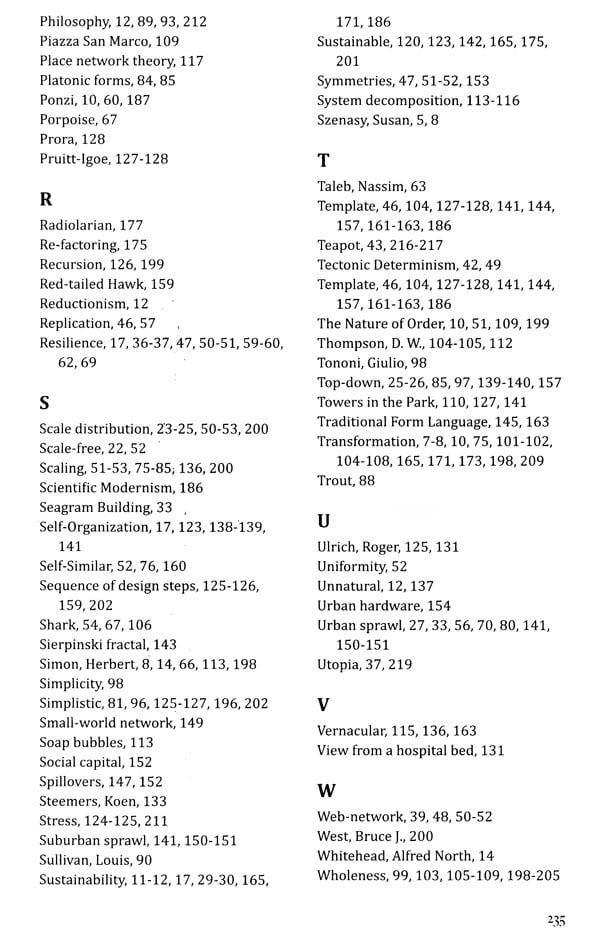
Design for a Living Planet- Settlement, Science and the Human Future
Book Specification
| Item Code: | UAO555 |
| Author: | Michael W. Mehaffy and Nikos A. Salingaros |
| Publisher: | Vajra Books, Nepal |
| Language: | English |
| Edition: | 2015 |
| ISBN: | 9789937623346 |
| Pages: | 236 (Throughout B/w Illustrations) |
| Cover: | PAPERBACK |
| Other Details | 9.50 X 7.00 inch |
| Weight | 290 gm |
Book Description
These topics outline, in a brief and introductory way, the early stages of a remarkable transformation in the science and art of design. It is fueled by insights from many fields, including the sciences of complex adaptive systems, relatively new topics in mathematics such as fractals and networks, biological and medical sciences, the cognitive and psychological sciences, and the rapidly maturing discipline of design science itself. All of this is notably propelled by new developments in software design. At the heart of this development lies a mode of understanding design as more than a specification of assembled parts - and certainly more than a willful artistic expression of favored ideas but rather, as a transformational operation on self-organizing systems. As we will discuss, this shift in thinking has profound implications.
The craft of such a transformation does have an artistic component, which is complementary to its scientific dimensions. But design in the sense meant here engages with a comprehensible structure, aiming to achieve another state of comprehensible structure that is preferred by the designers and their clients (to echo Herbert Simon's famous definition of design). Such a process is not mysterious, and not subject to the paralyses that seem to grip many design professions today. These self-organizing processes offer us a concrete basis to deal with the great challenges of our time - but only if we first understand the kinds of design problems they pose, and the kinds of tools and approaches that can operate effectively upon them. That is the central lesson that this book documents.
As we write this in 2014, the world's major economies se s be emerging finally from the historic recession and global finan crisis beginning in 2008. There is a prevalling sense that we "dodged a bullet" and the like - can with a few tweaks to financial regulato have resumed all our previous assumptions that human occupatio of the planet is perfectly fine in the broader sense.
Yet there are clear warning signs that not enough has changed and that, if we do not learn the lessons of the recent past and reform our ways, we may soon enough be in for a repeat, or much worse Indeed, the near-catastrophic events of 2008 now appear as a kind of "warning shot across the bow", demonstrating, to those who care to notice, that deeper systemic reforms are needed.
We are not speaking only of changes in financial regulations, or changes in economic policy. The Ponzi-like structure of our current economics has its roots in a deeper reality: the Ponzi-like structure of our consumption, depletion, and degradation of the planet's resources, and the set of resulting catastrophes that mounting evidence now shows are ever more likely.
**Contents and Sample Pages**
